The life cycle of Wisconsin election ballots
Voters spend just a few minutes to cast their votes, but their ballots will live much longer — and their paths before and after Election Day are carefully documented.
Wisconsin Watch
November 8, 2022
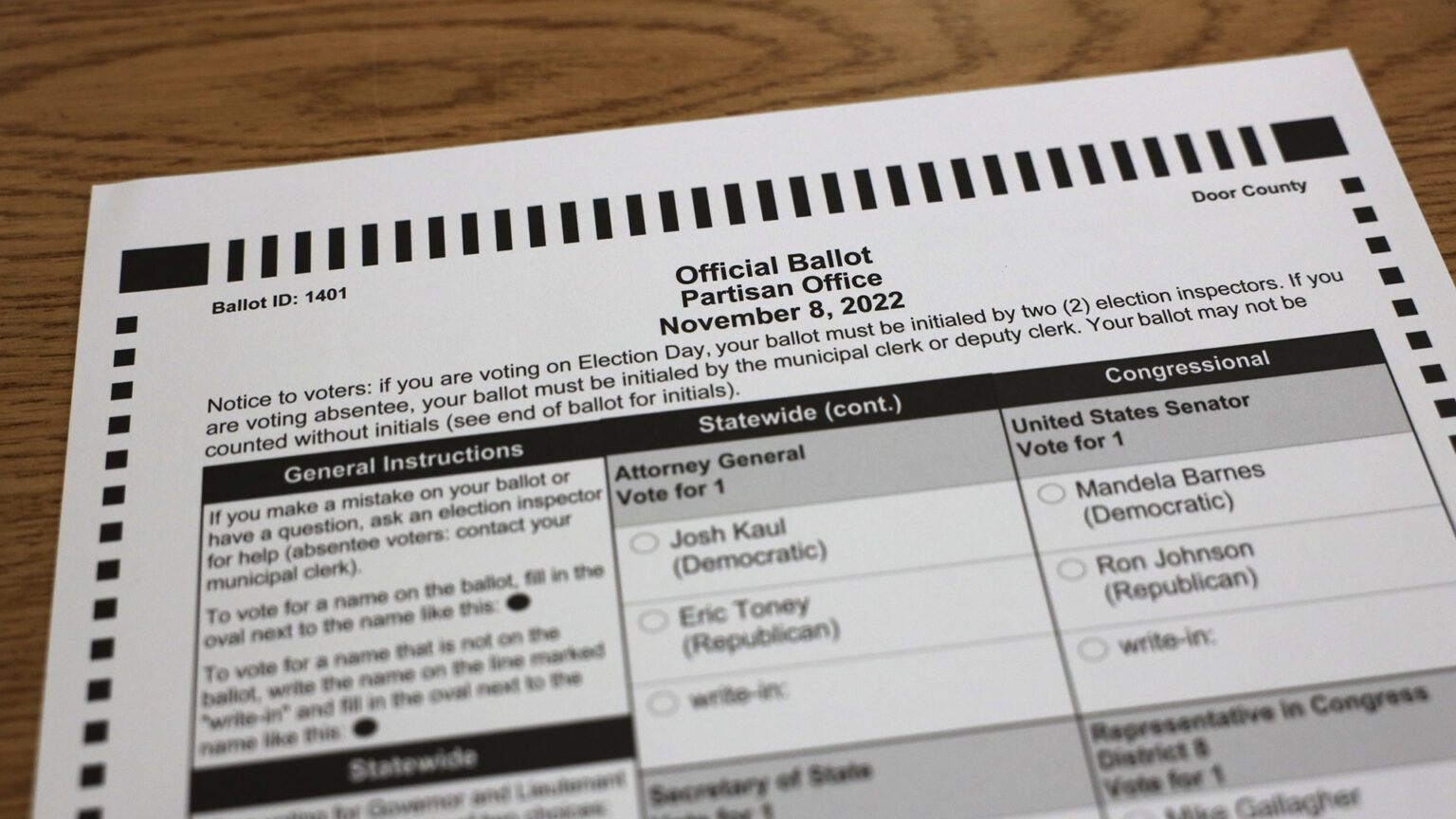
An official ballot for the Nov. 8, 2022 election is seen at the Village of Ephraim administration building in Door County on Oct. 25. (Credit: Coburn Dukehart / Wisconsin Watch)

As Wisconsinites head to the polls on Nov. 8 they may only spend four or five minutes with their ballot.
They’ll mark their votes, get a sticker and check the results that night.
But their ballots have a much longer life cycle, with checks and balances in place along the way to ensure they’re counted correctly.
Before they are handed to voters, ballots are designed and tested, then distributed to local clerks and secured. Their movements over days and weeks before and after Election Day are documented.
Despite the safeguards, disinformation about ballots has swirled since the 2020 election. Republicans led by former President Donald Trump have made all sorts of fantastical claims such as supposed late election night ballot “dumps” in Milwaukee.
The phenomenon is easily explained by a state law that prohibits the counting of absentee ballots before Election Day, meaning clerks must juggle in-person voting with hundreds or thousands of absentee ballots that must be taken from envelopes and fed through counting machines, often at the end of a long day of voting.
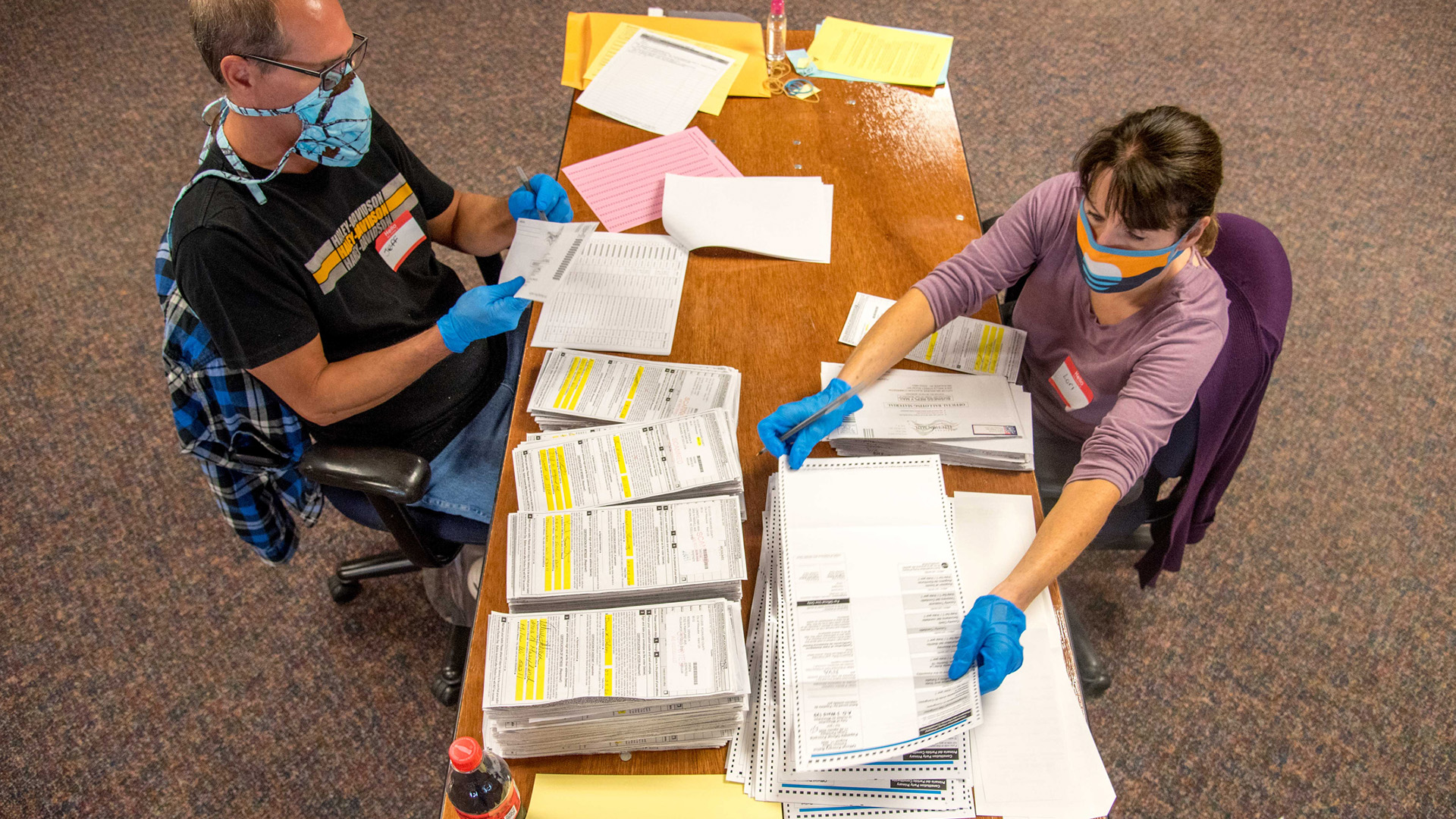
Election workers Jeff and Lori Lutzka process absentee ballots at Milwaukee’s central count facility on Aug. 11, 2020. Under Wisconsin law, clerks can’t start counting absentee ballots until Election Day. Some large municipalities, like Milwaukee, use central locations to tally absentee votes, which is how a large number of votes can be reported late at night all at once. (Credit: Will Cioci / Wisconsin Watch)
And on Oct. 31, state Rep. Janel Brandtjen, R-Menomonee Falls, reported someone requested absentee ballots for three members of the military and had them mailed to her home. Days later, Milwaukee fired the deputy director of its Election Commission, and officials said she may have requested the ballots — off duty and without city resources — in an effort to show a vulnerability.
On Nov. 4, Milwaukee prosecutors charged Kimberly Zapata, the former official, with a felony and three misdemeanors.
“While this case understandably will receive a lot of attention,” Wisconsin Elections Commission Administrator Meagan Wolfe said in a statement, “the fact remains that election fraud is extremely rare, and when it does occur, it is quickly discovered, and there are consequences.”
The design and prep work of a Wisconsin ballot
The life cycle of a ballot starts shortly after the previous election.
Counties began preparing the ballots for the Nov. 8 election as soon as the candidates emerged from the August primary.
Most counties rely on a printing company for both ballot design and production. Dane County is one of the few that design them in house, County Clerk Scott McDonell said.
They aren’t printed on regular paper someone might use at home. The paper is thicker, designed specifically for the tabulator machines. Each has black hash marks along the bottom that tell the tabulator where to look for votes.
Various conspiracy theories about paper ballots used in the 2020 election have been debunked, including in Arizona where a group unsuccessfully looked for water marks or bamboo fibers in the paper, supposedly because of unfounded suspicions they were produced in China.
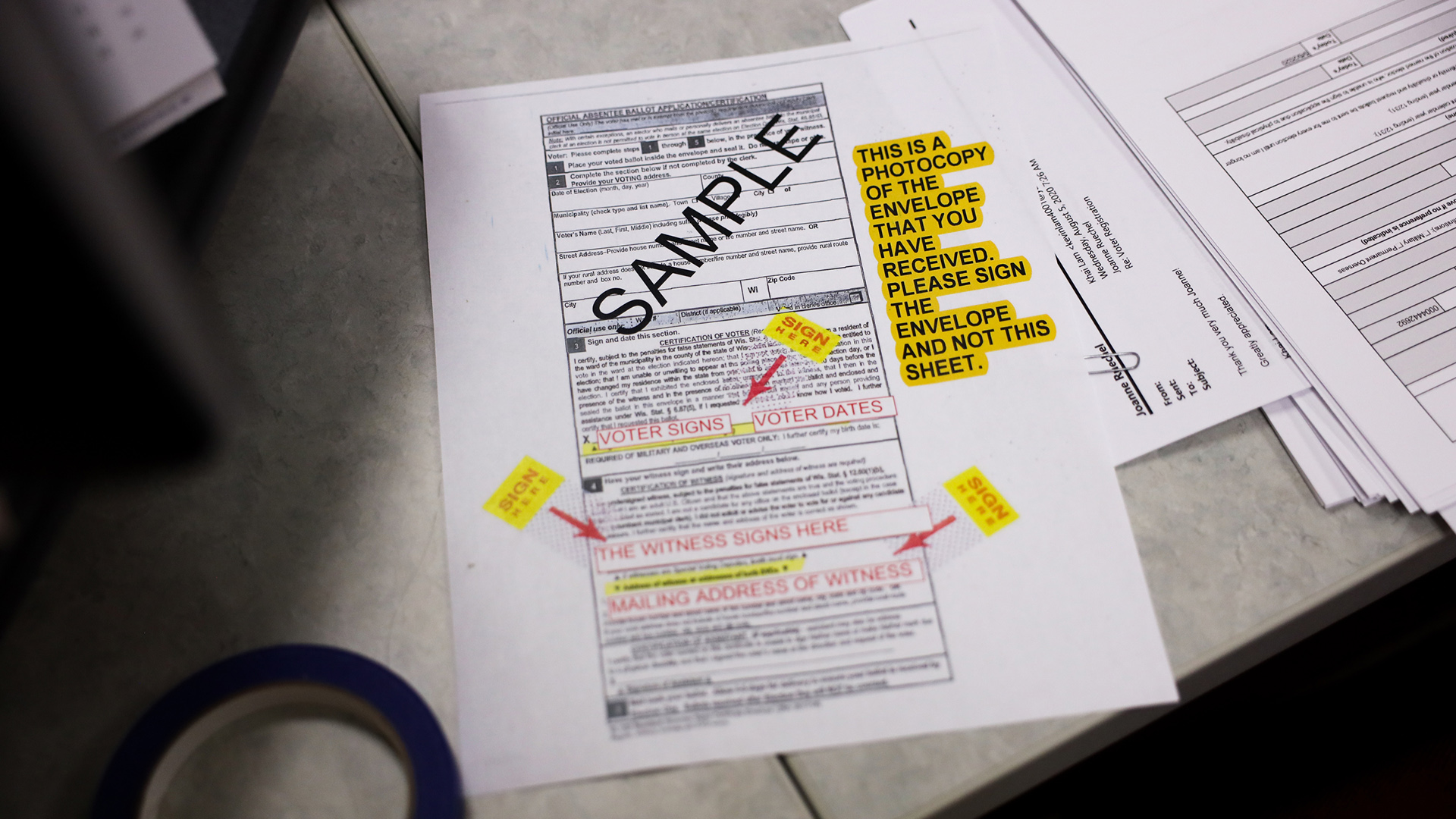
Joanne Ruechel, town clerk of Rib Mountain, included a sample ballot with instructions on how to fill it out, ahead of the 2020 primary to try to prevent errors. She made these instructions by hand, as they were not provided by the county or state for the election. Photographed Aug. 11, 2020. (Credit: Coburn Dukehart / Wisconsin Watch)
From the moment a municipal clerk receives the ballots, usually a few days before absentee voting, the practice of documenting their every move begins.
In Portage, about 45 miles north of Madison, the election materials are stored in a vault in city hall, said Portage City Clerk Marie Moe, president of the Wisconsin Municipal Clerks Association.
Clerks test the ballots and tabulators before the election, including a test that’s open to the public and must take place within 10 days of the election. The tests ensure machines read everything correctly.
Absentee voting has its own rules
Once the ballots are tested, they can be sent to absentee voters, which Moe and other clerks have been doing for weeks. Since Sept. 22, they’ve been required to send them within one business day of receiving a request.
Before someone can receive an absentee ballot in the mail, they must first make a written application request, which can be mailed or done on the state’s myvote.wi.gov website. Clerks don’t send them out until staff verify the voter’s eligibility and log the request into their system.
That does not apply if a voter is registered as being indefinitely confined. These voters automatically receive ballots without request — but then lose that status if a ballot isn’t returned. In those cases, clerks send out a notice to the indefinitely confined voter. If they don’t reapply for that status within 30 days of receiving the notice, they will be removed from the indefinitely confined list.
In every case, an election worker initials the ballot, a key step that makes it a live ballot that can be cast. They’re folded and placed into envelopes with postage, and then bundled together and given to postal workers.
An October court ruling means absentee voters will not be able to “spoil” their original ballot and vote in person if they want to change their vote. Fewer than 1% of ballots had been spoiled in recent major elections.
Many groundless conspiracy theories have targeted the absentee process, but clerks and officials have defended the safeguards. No widespread fraud with mail voting has been found in Wisconsin.
Activist gets felony charge after getting other voters’ ballots
A lack of systemic fraud doesn’t mean elections are perfect or without gaps or mistakes.
Conservative activists in Wisconsin have been requesting absentee ballots for other people, which is a felony — a punishment meant to deter such activity. Nonetheless, the actions have highlighted parts of the system that can be manipulated, if people are willing to go to prison.
Harry Wait, 68, of Union Grove, requested absentee ballots for state Assembly Speaker Robin Vos, R-Rochester, and others. Wait had the ballots mailed to himself — and then publicized what he’d done, saying he was ready to be charged criminally.
Wait requested the ballots, according to a criminal complaint that included four felonies, to show “that it was possible to ‘harvest ballots’ on the internet.”
Still, the process to request an absentee ballot does have safeguards.
Voters must already be registered, which means there’s been some vetting about who they are and their residency, said Melissa Kono, clerk for the Town of Burnside in Trempealeau County.
If the voter doesn’t have a photo ID on file, that needs to be verified as well, unless they are indefinitely confined or a military voter. A ballot that comes back without the proper initials would raise a red flag, Kono said, and require additional checks to see if someone forgot to initial the ballot or someone is trying to commit fraud.
Here’s how in-person absentee voting works
Starting Oct. 25, Wisconsinites were able to vote early, in person, which is, in effect, another way to vote absentee.
Each morning of early voting, Moe and her staff take about 20 ballots out of the vault for each precinct, a step that is documented like nearly everything else over the next several weeks.
“Documentation is a huge, huge thing that I don’t think people think about in general,” she said. “The inspector statement is kind of like the diary of Election Day.”
When they check in for early voting, voters have to state their name and address, and present their ID. Staff verifies the voter information in WisVote, Wisconsin’s online election management system.
Once signed in, staff initial the ballot, and the voter can then make their decisions.
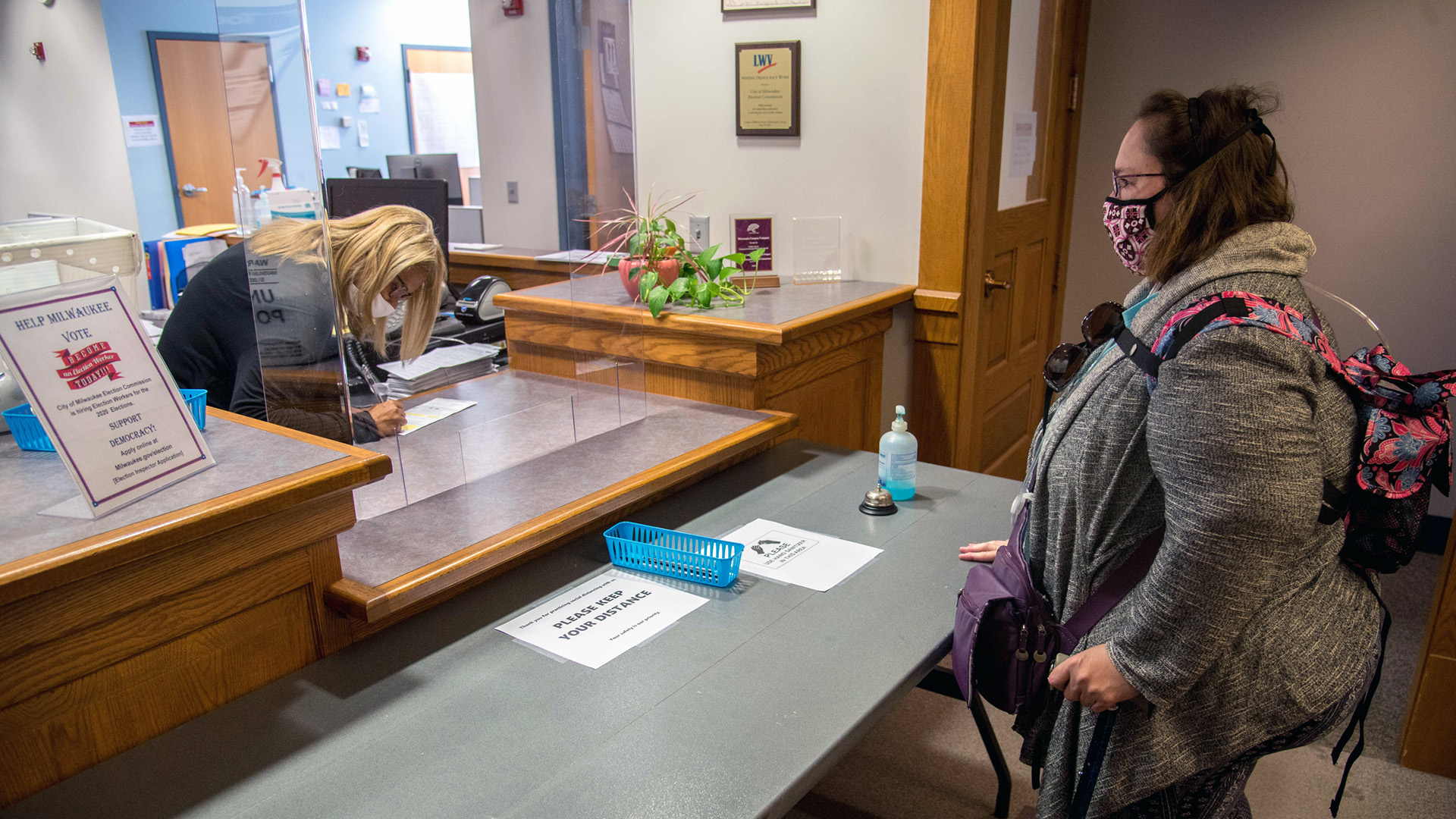
Lee Ann Medina, right, looks on as a Milwaukee Elections Commission employee witnesses her absentee ballot on the day of the election on Aug. 11, 2020. (Credit: Will Cioci / Wisconsin Watch)
Portage and Madison use ExpressVote machines for some early voting. They’re also used on Election Day by people with disabilities who require assistance. This varies by municipality, and absentee ballots mailed to voters are often perforated, unlike Election Day ballots, to make them easier to fold for envelopes.
On the ExpressVote machines, voters insert a blank ballot and use a touch screen to make their choices. The machine prints their choices onto the paper that’s returned to the voter, which is sealed in an absentee envelope. An election worker or clerk can sign as the witness.
Under Wisconsin law, clerks can’t start counting absentee ballots — be they in-person or by mail — until Election Day. Some large municipalities, like Milwaukee, use central locations to tally absentee votes. That’s how a large number of votes can be reported late at night all at once.
It’s Election Day!
By the time Tuesday rolls around, more than a half million Wisconsinites will have voted. But many more will do so on Election Day.
At the state’s 3,700 polling places, workers verify a voter’s registration and correct polling location. Two workers initial a blank ballot, making it active before handing it off to the voter.
Voters then enter the booth and make their decisions.
The next stop is the tabulator.
Voting tabulators have been targets of disinformation, but researchers and clerks have said they’re simply large counting machines that are faster and more accurate than people.
“This machine has no modem to it,” Kono said of her tabulator. “It can’t be hooked to the internet. Even if it could, I don’t have internet here. So there’s no transmission capability for this machine.”
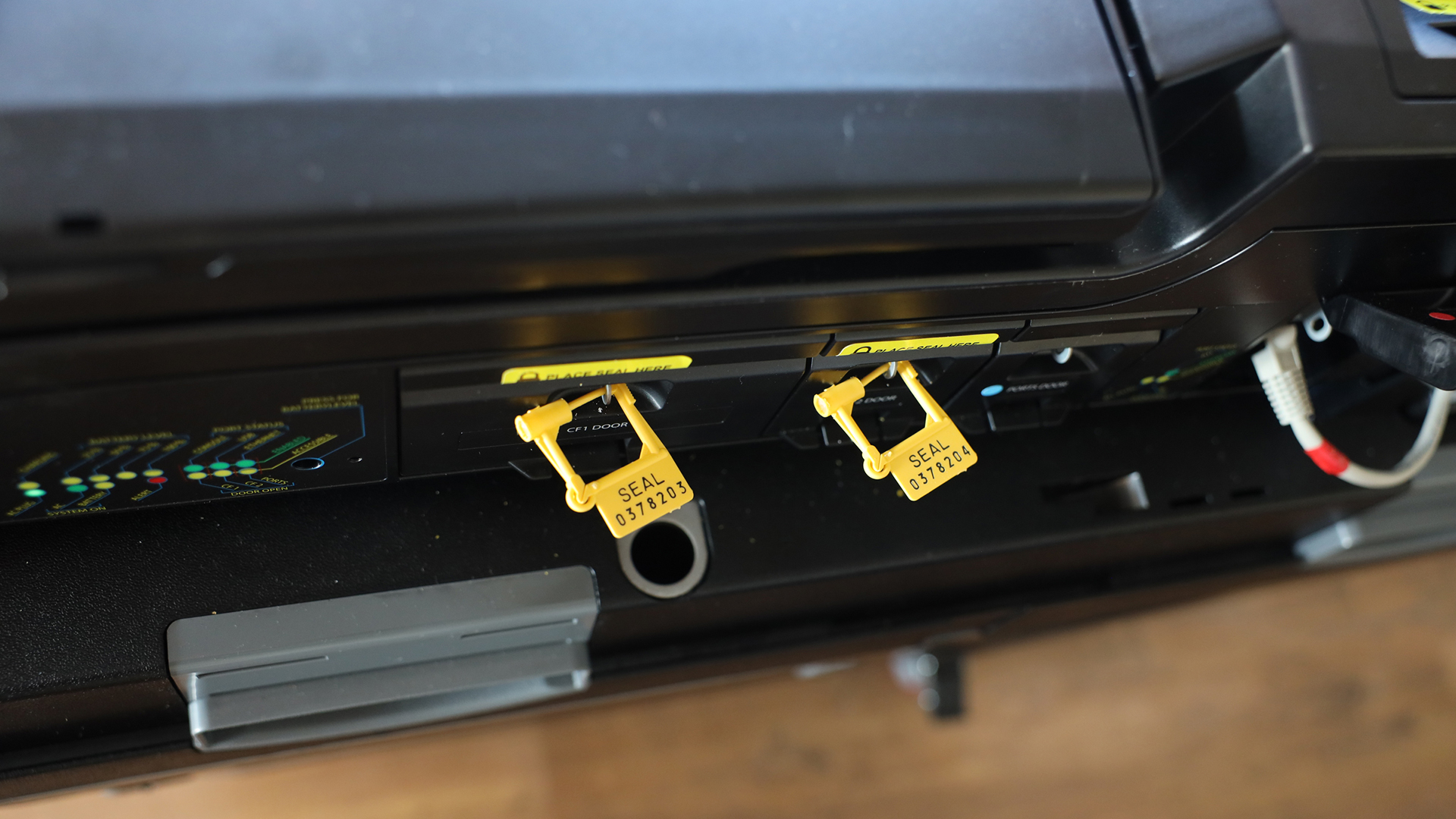
Yellow security seals are used to lock the election cartridges into the ballot tabulators. The serial numbers for the seals are also documented by election workers. Photo taken in Burnside in Trempealeau County on Oct. 20, 2022. (Credit: Matt Mencarini / Wisconsin Watch)
The machines use the cartridges — which can look like a flash drive or handheld video game cartridge — to know who the candidates are and where they appear on the ballot. The company that programs them does so on computers that aren’t connected to the internet and are monitored by security cameras.
The tabulators also check for any errors, like too many votes cast for a particular race, and voters can correct those errors. If there’s no problem, the votes are counted and the ballot dropped into a locked bin. In Wisconsin, whether someone voted is public information, but who they voted for is not.
Voters then get an “I Voted” sticker and carry on with their day.
But the ballot still has a ways to go.
Counting the absentee ballots
On Election Day, voters might see workers run a handful of ballots through a tabulator that don’t appear to come from voters. What they’re doing is counting absentee votes, clerks told Wisconsin Watch. The activity is documented on the inspector logs that are later sealed with other election materials.
Once the polls close, election workers as a team open the tabulators to remove the ballots. Some might have been removed previously to make room in the bins. A step that, like nearly all others, will be documented.
- Election workers count ballots at the Milwaukee central count location after the polls had closed for the evening on Nov. 3, 2020. (Credit: Eric Kleppe-Montenegro for Wisconsin Watch)
- Volunteer Mike Otten processes absentee ballots that were received by mail at the municipal center in Rib Mountain during the partisan primary on Aug. 11, 2020. (Credit: Coburn Dukehart / Wisconsin Watch)
Workers then check for registered write-in candidates and verify that the number of ballots cast equals the number of votes the machines recorded. If the numbers don’t match, election workers will double check the voting machine bins and review the poll books. Sometimes a discrepancy must be addressed with a random “draw down” of ballots.
Workers check the count totals for in-person and absentee voters to find the group with the discrepancy. Ballots are placed in a box and workers randomly remove ballots, which are marked as “removed due to an excess number of absentee ballots.” This is done publicly, but without explanation. The ballots are retained, but not counted, and marked as removed.
Long-term storage for ballots
Even after being cast and counted, a ballot’s life still isn’t over.
They’re once again placed into bags and locked with a security seal like all the other election materials. Used and unused ballots are secured in separate bags, the number of each documented.
Each county handles the long-term storage and collection of materials differently.
In Columbia County, where Moe works, all the sealed election materials are taken to the county clerk the next day.
Dane County municipalities hold onto their ballots unless the county needs them. McDonell said he’d like the county to keep them once a $12 million secure storage facility is built.
By law, ballots with a federal office must be held for 22 months and 12 months if they involve only state or local offices. The retention is mostly to preserve evidence in the event of a law enforcement investigation or a recount. The day after the election, the Wisconsin Elections Commission randomly selects contests and polling places for audits.
McDonell said the ballots are eventually shredded and discarded when legally allowed.
When the calendar turns to Nov. 9, voting in the midterm election will be over, but clerks won’t have long before the work starts all over — just 105 days until the next election.
The nonprofit Wisconsin Watch collaborates with WPR, PBS Wisconsin, other news media and the University of Wisconsin-Madison School of Journalism and Mass Communication. All works created, published, posted or disseminated by Wisconsin Watch do not necessarily reflect the views or opinions of UW-Madison or any of its affiliates.
 Passport
Passport




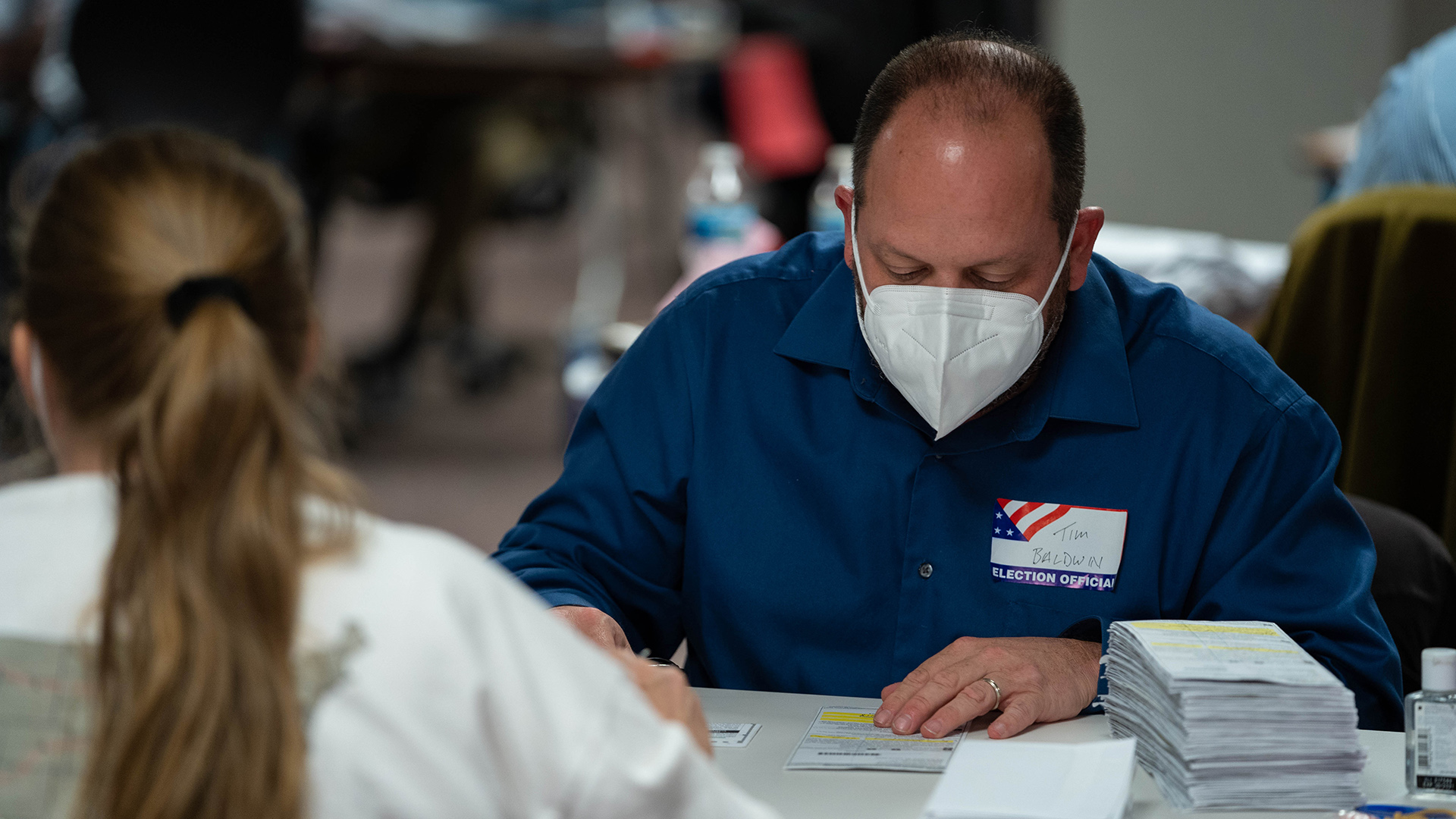
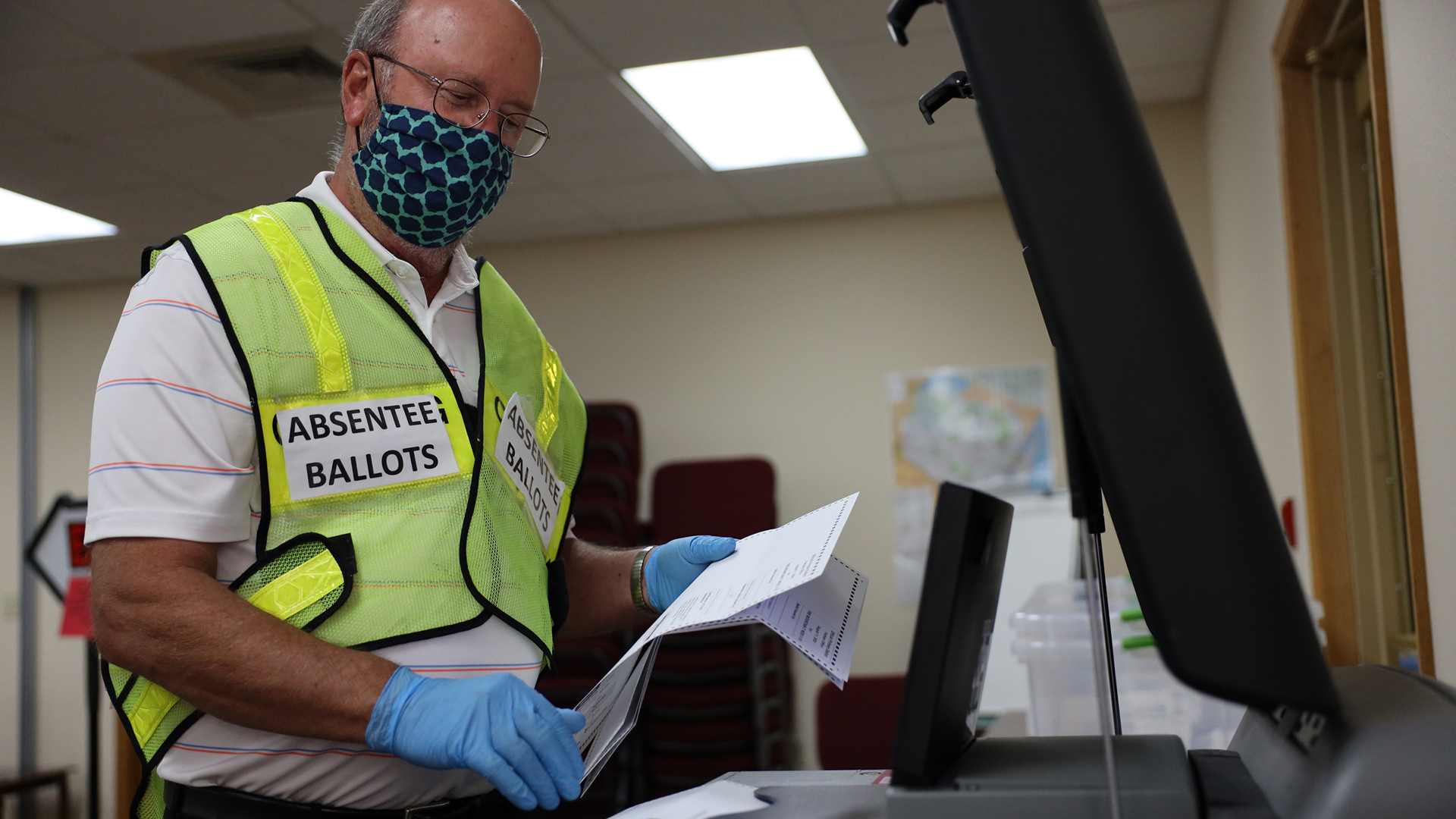
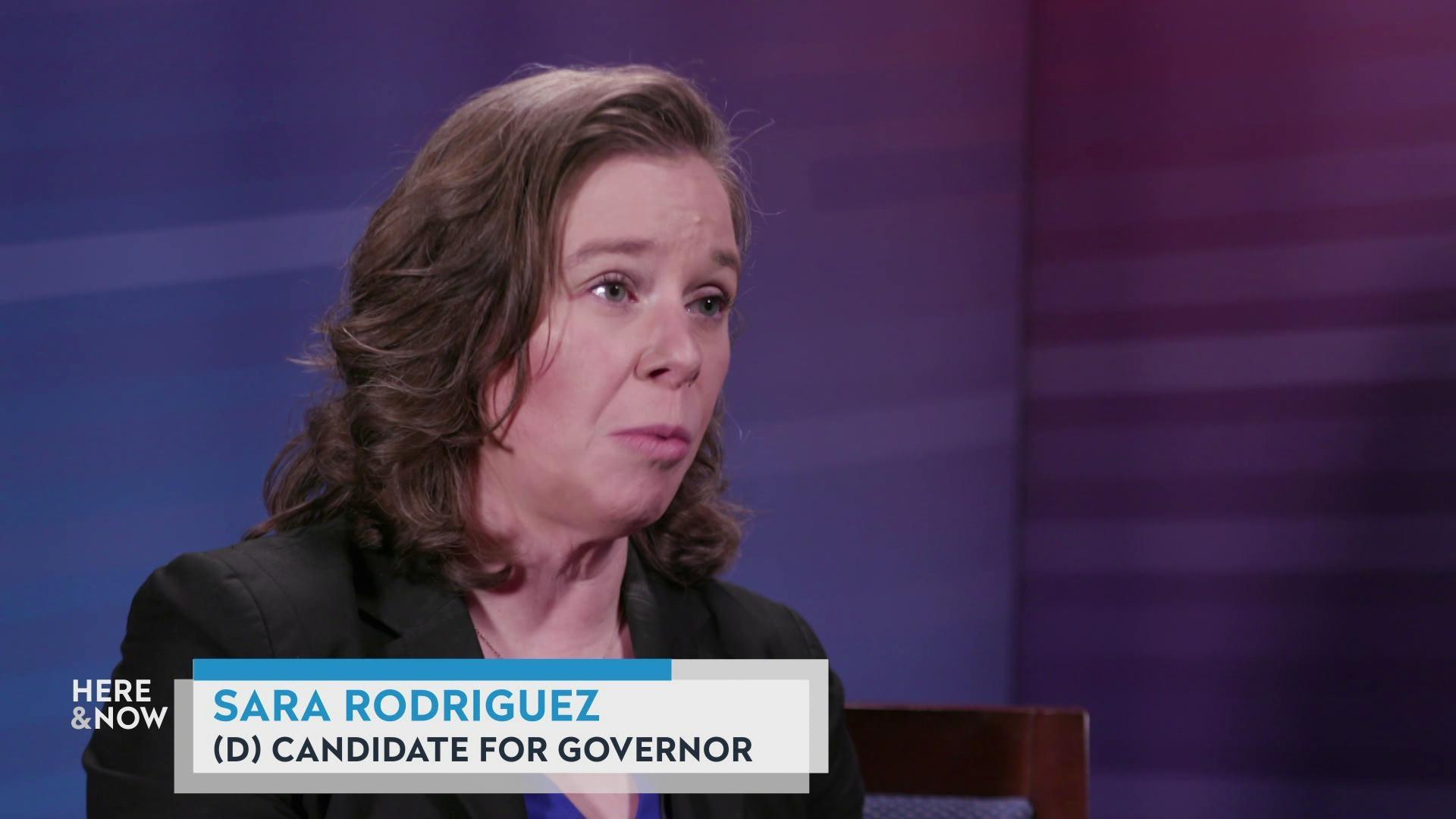






Follow Us